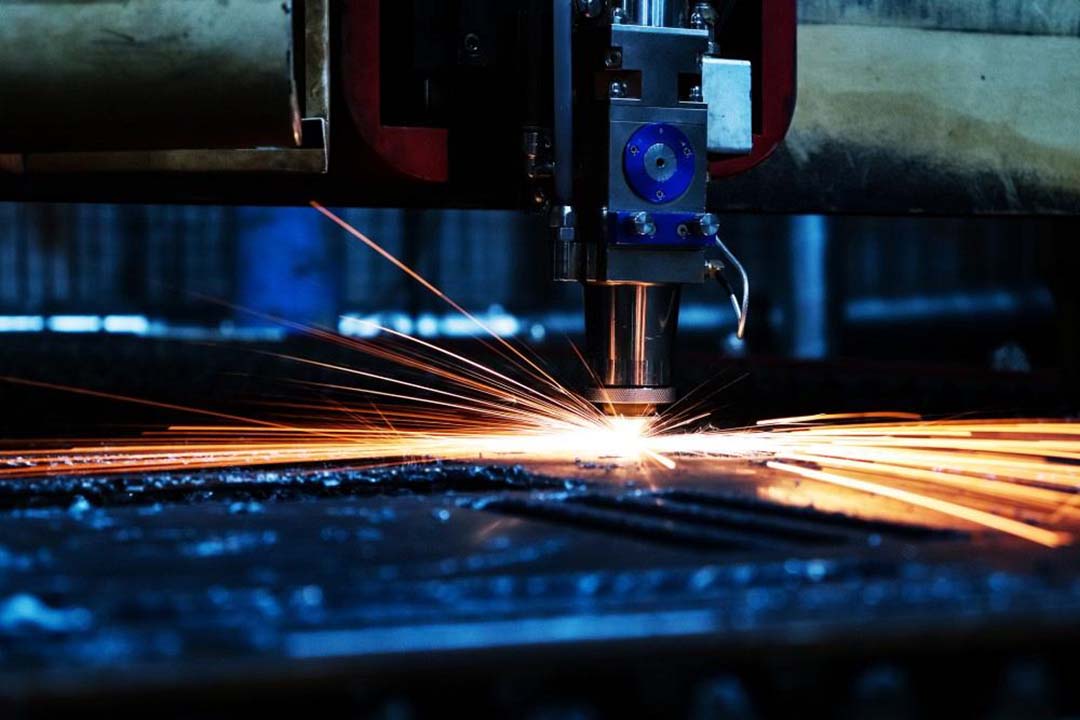Views: 31 Author: Site Editor Publish Time: 2022-08-26 Origin: Site
Many people refer to welding and metal fabrication as if they were two different words for the same process. While both processes require the use of metal, the terms are not interchangeable. Metal fabrication can be described as the process of making a product from metal. Welding is usually a part of that process. There are several processes for metal fabrication, and welding is only one of them. So what do welding and metal fabrication refer to, respectively? In this article, Goldconn, a sheet metal manufacturer, will discuss with you.

Welding and metal fabrication are processes used to form, cut, bend and join metals to create different products. Various tools and methods are used throughout the process to achieve the desired result.
Welding: The manufacturing process of joining two pieces of metal together by heat, pressure, or both is called welding. Welders use special tools to heat the metal and form a bond to join the two pieces or repair a crack.
Fabrication: All processes that use pure metal to make a machine or structure are considered a metal fabrication. Processes may include cutting, burning, welding, machining, forming, and assembling.
Welding is a manufacturing process and, therefore, can technically be referred to as a metal fabrication. However, many types of metal fabrication do not require welding. Therefore, the entire metal fabrication process cannot be completed using only the tools and processes used for welding.
Metal fabrication is the manufacturing process used to make metal products or parts. Metal fabrication is typically accomplished through multiple processes, which may include
Cutting: Metal cutting is usually done by machines. Waterjet and laser cutting are the most common techniques used to cut metal today.
Casting: Machine molds create molds for specific shapes. Manufacturers pour molten metal into these molds to create metal parts.
Forging: Using high-pressure machinery, the raw material is compressed so the manufacturer can bend and shape it.
Punching: Punching machines punch pre-designed patterns into the metal for decorative or functional purposes.
Stretching: This process applies a specific amount of tension to liquid metal to pull it into a tapered die.
Milling: A complex machine is used to scrape the surface of the metal to create angles, perforations, or holes in the metal part.
Turning: Placing metal on a rotating platform so that technicians can use tools to make radial cuts as the metal rotates.
Extrusion: Used to form cylindrical parts, such as pipes or wires, extrusion uses a plunger to force a blank through a die.
Welding is part of the manufacturing process that joins metal parts together. Welders use specialized tools that combine heat and pressure to fuse metal parts without compromising strength. Welding is divided into two main categories.
Fusion welding: The act of heating metal parts and then adding fillers to join them together is called fusion welding.
Solid-state welding: The process of heating metal parts and joining them together without additives is called solid-state welding.
In practice, we use fusion welding and solid state welding depending on the needs of the metal being processed.
Shielded Metal Arc Welding (SMAW): A fusion welding method known as stick welding, SMAW uses an electric current and a welding rod to join metal surfaces.
Oxyacetylene Welding (OA): Oxygen and acetylene tanks are used with a torch nozzle to produce a flame that heats the metal, while a filler rod is used for melting.
Tungsten Inert Gas Welding (TIG): TIG welding uses a non-consumable tungsten electrode to perform the welding.
Gas Shielded Metal Arc Welding (MIG): MIG welding feeds wire through a continuous spool of electrode wire into a consumable rod.
Metal fabrication requires various processes to make many different products and machines. With its unique tools and processes, welding is an essential part of metal fabrication.
If you are interested in learning more about metal fabrication products, you can do so through our product showcase, "Metal Fabrication" which has various metal fabrication types. You can leave a message or contact us directly if you need metal fabrication services.
Dear friends, We are pleased to invite you to attend PCIM EUROPE 2025 EXHIBITION. Goldconn will be showcasing our latest innovations and technologies at Hall 6, Booth 300, which will be held at the Nuremburg, Germany, from 6th to 8th May 2025.
The Qingming Festival is an important traditional festival in our country.
https://goldconnhk.com
In order to ensure the safety of employees in the operation of equipment, our company will often hold safety production training to enhance employees' safety awareness and operation norms
Many machine parts that are important for repair and replacement are the product of metal fabrication. The importance of metal fabrication in manufacturing and industry cannot be overstated. This process plays an essential role in manufacturing and is often the foundation and support for sheet metal
USB connectors were introduced in the mid-1990s and have since evolved in size, shape, and data and power transfer capabilities. Today, the latest physical standard is Type C. In addition to greater bandwidth and bi-directionality, and reversibility, this latest iteration is capable of significantly
Many people refer to welding and metal fabrication as if they were two different words for the same process. While both processes require the use of metal, the terms are not interchangeable. Metal fabrication can be described as the process of making a product from metal. Welding is usually a part o